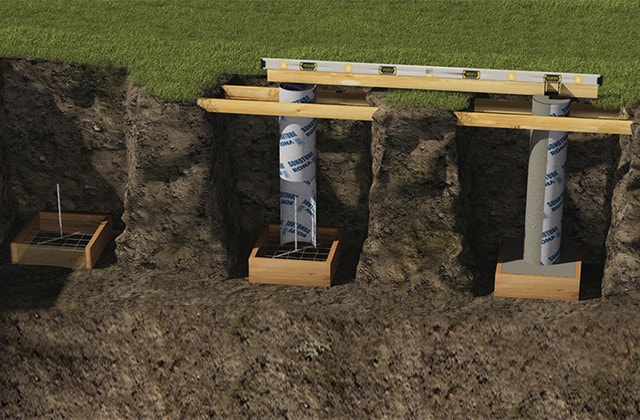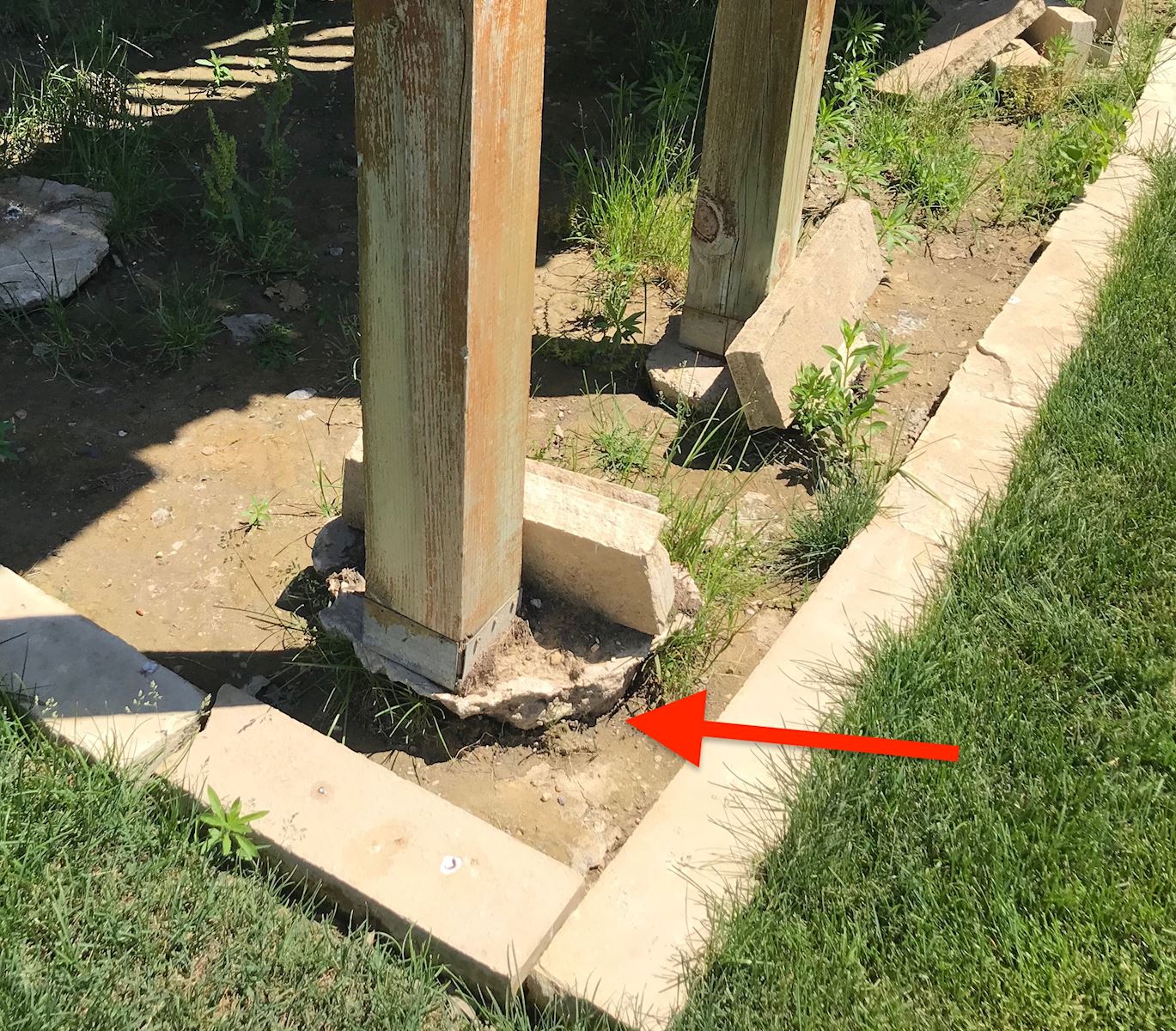Building from scratch: The Ultimate Overview to Designing and Installing Deck Footings
Building from scratch: The Ultimate Overview to Designing and Installing Deck Footings
Blog Article
Make Sure Security and Longevity With Effectively Set Up Deck Footings
Deck grounds may not be the most extravagant facet of deck building, but they play a vital role in guaranteeing security and durability. In this conversation, we will discover the value of correct deck footings, elements to think about throughout setup, various types of grounds offered, step-by-step installation guide, and maintenance suggestions for making sure long-lasting grounds.

Value of Correct Deck Footings
Why are effectively installed deck grounds crucial for the security and durability of your deck? The answer exists in the essential function that deck footings play in sustaining the weight of the whole framework. Deck footings are the foundation on which the deck relaxes, moving the load from the deck to the ground. When footings are not effectively set up, it can lead to a series of issues that compromise the security and long life of the deck.
To start with, correctly set up deck footings disperse the weight of the deck uniformly, stopping any type of irregular settling or sinking. This is especially crucial in locations with unpredictable dirt, as it assists to mitigate the risk of the deck falling down or moving. Furthermore, well-installed footings make sure that the deck continues to be degree, stopping any kind of structural damages that can occur when a deck comes to be irregular.
Second of all, effectively set up footings provide a strong anchor for the deck, preventing excessive motion and sway. This assists to keep the structural stability of the deck, decreasing the threat of mishaps or injuries. It additionally minimizes the damage on the deck, enabling it to endure the aspects and routine use for a longer duration of time.
Factors to Consider for Deck Footing Setup
When installing deck grounds, there are several important variables to take into consideration for correct setup. Different soil types have different load-bearing capabilities, so it is vital to carry out a dirt test to ensure the grounds can sustain the weight of the deck and its owners. By taking right into account these elements, you can make sure the correct installation of deck grounds and appreciate a durable and secure deck.
Types of Deck Footings to Select From
There are several different sorts of deck footings available for you to choose from. Each type has its very own benefits and drawbacks, so it's necessary to consider your certain demands and the conditions of your deck before choosing.
One common kind of deck footing is the concrete ground. This includes digging openings in the ground and pouring concrete right into them to create a strong structure. Concrete grounds are resilient and give superb security, making them suitable for decks in areas with tough dirt conditions or high wind lots.
One more choice is the helical pier ground, which contains a steel shaft with helical plates that are screwed into the ground. These grounds are quick to mount and can be utilized in numerous dirt types, including sandy or clay soils. They are likewise flexible, enabling for very easy progressing of the deck.
Sonotube footings are an additional prominent selection. These footings are developed by putting a cardboard tube in an opening and filling it with concrete. Sonotube footings are fairly simple to mount and supply appropriate stability for smaller sized decks or in areas with much less demanding dirt conditions.

When selecting the kind of deck footing, it's crucial to consider elements such as soil conditions, deck size and weight, local building codes, and personal choices. By picking the suitable ground kind, you can guarantee the security and long life of your deck.
Step-by-Step Overview for Putting Up Deck Footings

Figure out the area: Start by noting the precise setting of each ground utilizing stakes and string (Deck Footings). Take into consideration any local structure codes or laws pertaining to problem distances
Dig the openings: Use a blog post hole digger or an auger to dig the openings for the grounds. Generally, a deepness of at least 36 inches is suggested for security.
Degree the openings: Ensure that the bases of the holes are level (Deck Footings). This can be attained by making use of a degree or a straight board across the top of the holes
Include crushed rock: Location a layer of crushed rock at the bottom of each opening to boost drainage and protect against the ground from penetrating the dirt in time.
Place the footing types: Insert the ground forms into the openings, ensuring they are centered and degree. Use risks to safeguard them in position.
Mix and pour concrete: Follow the directions on the concrete mix bag to prepare news the concrete. Pour the concrete into the footing forms, filling them entirely.
Smooth the surface: Use a trowel to smooth the surface area of the concrete and get rid of any type of air pockets. Permit the concrete to heal according to the supplier's guidelines.
Upkeep Tips for Lasting Deck Footings
Proper maintenance is important for guaranteeing the long life and security of deck grounds. By on a regular basis inspecting and preserving your deck grounds, you can stop damages and possible safety dangers. One essential aspect of upkeep is to on a regular basis inspect for any indicators of deterioration, such as cracks or activity in the grounds. If you see any kind of problems, it is necessary to resolve them quickly to stay clear of more damage.
Routine cleansing is additionally important for preserving deck footings. Dirt, debris, and vegetation can accumulate around the footings, which can bring about moisture accumulation and decay. Cleaning up the footings regularly, using a brush or a stress washer, can assist avoid these problems and extend the life expectancy of your deck.
Along with cleaning, it is essential to keep the area around the grounds free from any blockages. Stay clear of stacking things against the grounds or allowing plants to grow as well near to them. These blockages can trap dampness and cause the grounds to degrade gradually.
Finally, routine resealing of the footings is advised to safeguard them from wetness and other ecological factors. Using a waterproof sealant can assist protect against water damages and expand the you could try these out lifespan of the footings.
Final Thought
To conclude, proper installment of deck grounds is important for guaranteeing security and durability of your deck. Variables such as soil type, tons capacity, and regional building regulations need to be taken into consideration when choosing the appropriate sort of deck footings. Complying with a step-by-step guide for setup and normal upkeep will certainly help to make sure the footings continue to be resilient and long lasting.
In this discussion, we will certainly discover the value of appropriate deck footings, variables to consider during setup, various kinds of footings available, detailed setup guide, and maintenance suggestions for ensuring lasting grounds. Deck footings are the structure on which the deck relaxes, moving the tons from the deck to the ground.One typical type of deck ground is the concrete footing. Place the footing forms: Put the footing creates right into the openings, guaranteeing they are centered and level.In final thought, proper setup of deck footings is important for making certain stability and durability of your deck.
Report this page